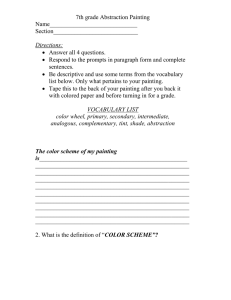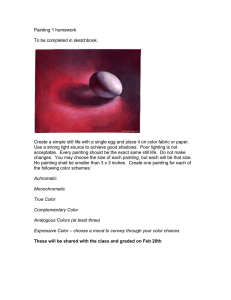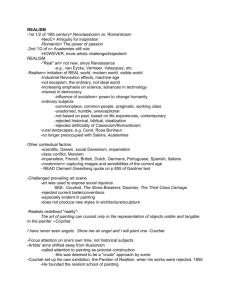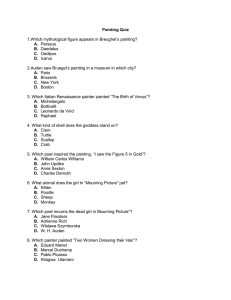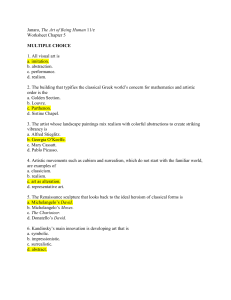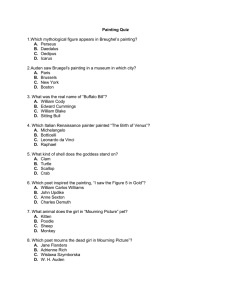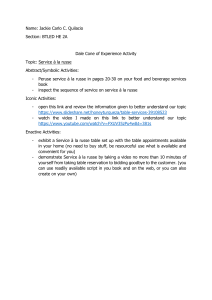Exam 2 review notes for study groups.doc
advertisement
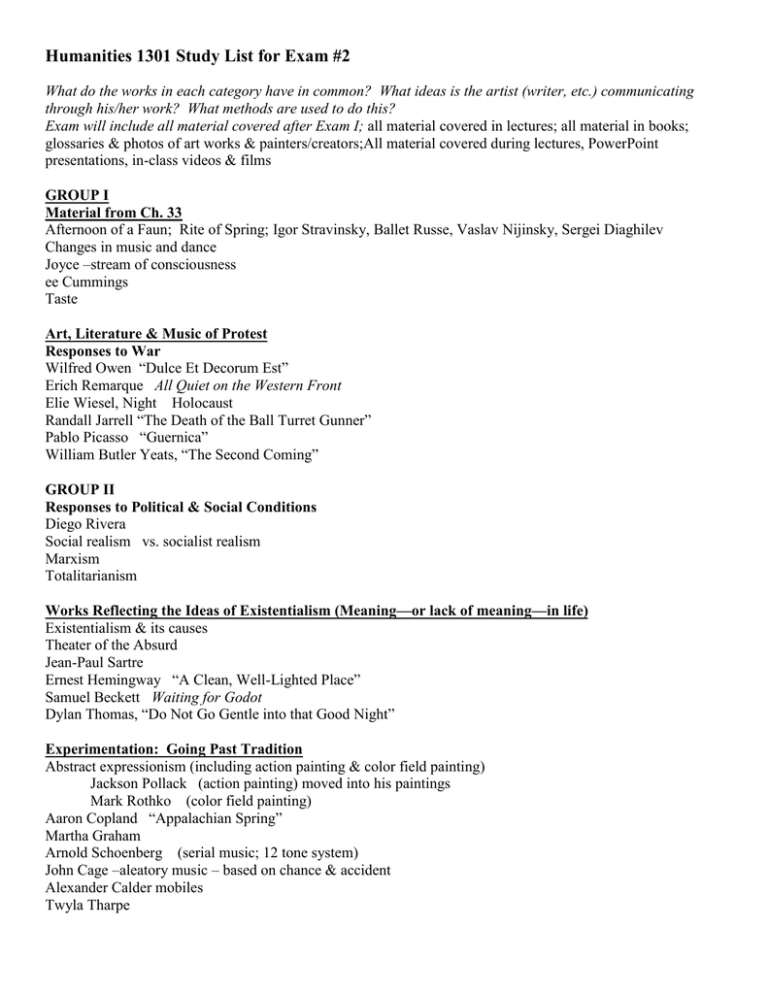
Humanities 1301 Study List for Exam #2 What do the works in each category have in common? What ideas is the artist (writer, etc.) communicating through his/her work? What methods are used to do this? Exam will include all material covered after Exam I; all material covered in lectures; all material in books; glossaries & photos of art works & painters/creators;All material covered during lectures, PowerPoint presentations, in-class videos & films GROUP I Material from Ch. 33 Afternoon of a Faun; Rite of Spring; Igor Stravinsky, Ballet Russe, Vaslav Nijinsky, Sergei Diaghilev Changes in music and dance Joyce –stream of consciousness ee Cummings Taste Art, Literature & Music of Protest Responses to War Wilfred Owen “Dulce Et Decorum Est” Erich Remarque All Quiet on the Western Front Elie Wiesel, Night Holocaust Randall Jarrell “The Death of the Ball Turret Gunner” Pablo Picasso “Guernica” William Butler Yeats, “The Second Coming” GROUP II Responses to Political & Social Conditions Diego Rivera Social realism vs. socialist realism Marxism Totalitarianism Works Reflecting the Ideas of Existentialism (Meaning—or lack of meaning—in life) Existentialism & its causes Theater of the Absurd Jean-Paul Sartre Ernest Hemingway “A Clean, Well-Lighted Place” Samuel Beckett Waiting for Godot Dylan Thomas, “Do Not Go Gentle into that Good Night” Experimentation: Going Past Tradition Abstract expressionism (including action painting & color field painting) Jackson Pollack (action painting) moved into his paintings Mark Rothko (color field painting) Aaron Copland “Appalachian Spring” Martha Graham Arnold Schoenberg (serial music; 12 tone system) John Cage –aleatory music – based on chance & accident Alexander Calder mobiles Twyla Tharpe
